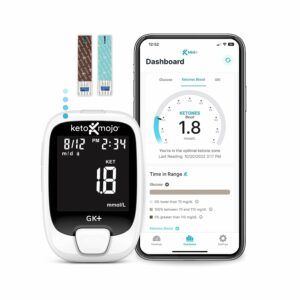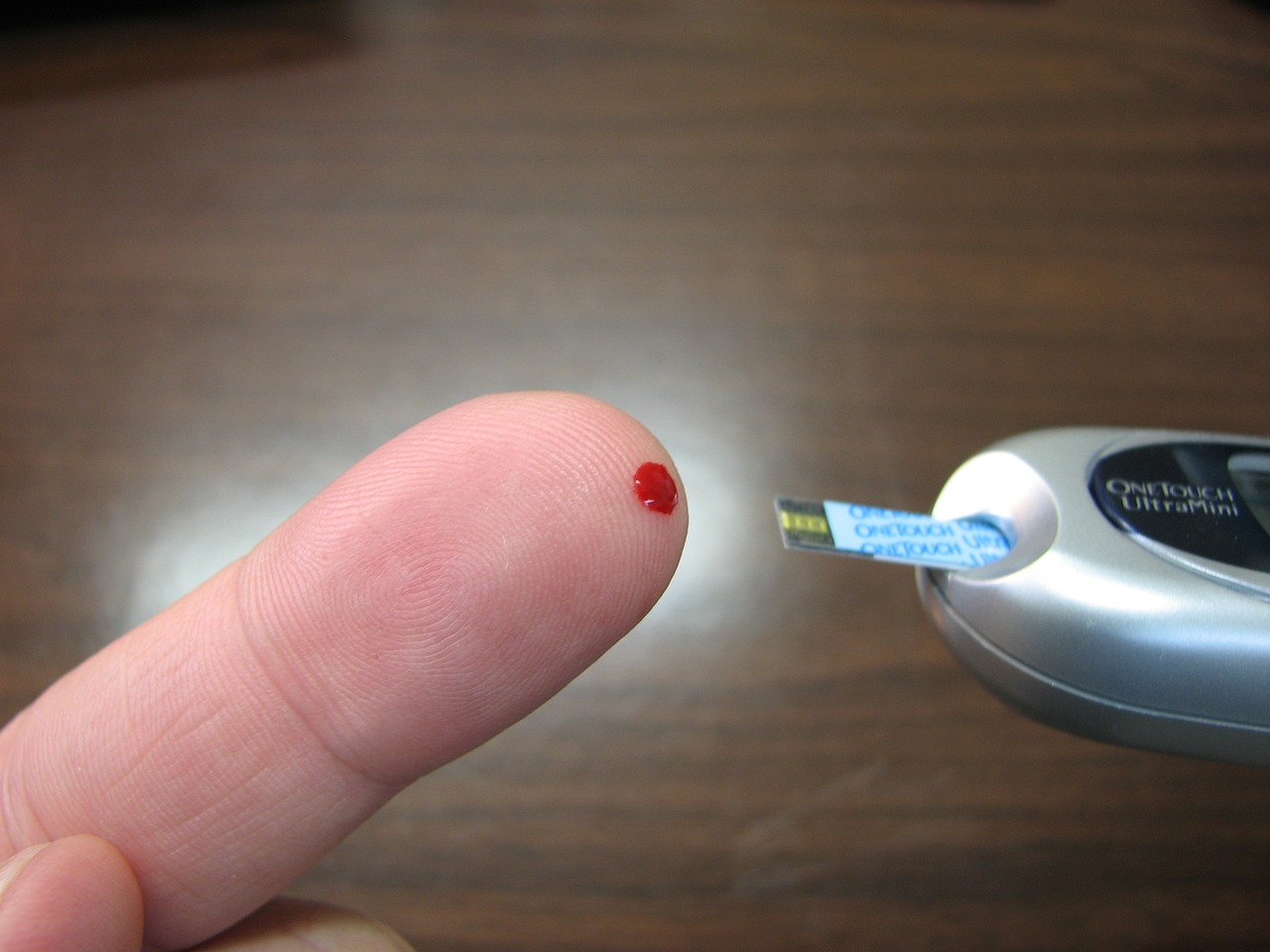Table of Contents
What Is A Good Ketosis Reading: Unveiling Optimal Ketone Levels
Ketosis has gained popularity as a metabolic state achieved by those following a ketogenic, or keto, diet, where the body shifts from using glucose as its main energy source to burning stored fat. The production of ketones is a byproduct of this fat metabolism, and these molecules can be used for energy by various tissues in the body, including the brain. A “good” ketosis reading indicates that the body is effectively in this fat-burning state, which many pursue for weight loss, improved mental clarity, and other health benefits.

To properly gauge whether you’re in ketosis—and to what extent—you’ll need to measure your current ketone levels. This is typically done via blood, breath, or urine testing, each with its own degree of accuracy and convenience.
The most precise measurements are typically obtained through blood ketone meters, which provide a direct and current level of ketones in your system.
The desired range for weight loss-oriented ketosis is commonly between 0.5 and 3.0 millimoles per liter. However, an optimal ketone level can vary based on individual goals and biochemistry.
Key Takeaways
- Ketosis is a fat-burning state where the body uses ketones for a source of energy.
- Ketosis can be achieved through methods such as fasting, transitioning to a low-carb diet, or following a ketogenic diet.
- Measuring ketone levels is crucial to determine if you’re in ketosis.
- Desired ketone levels for weight loss are usually between 0.5 and 3.0 millimoles per liter.
- The ideal ketone level can differ based on individual goals.
- Increased dietary fat or exogenous ketones can lead to elevated ketone levels, which are associated with a high-energy state.
- Ketosis is a natural bodily process that occurs during periods of sleep, fasting, exercise, or when following a low-carbohydrate diet.
- While blood tests can provide real-time information on ketone levels, urine tests can only indicate ketone levels from the past few hours.
Understanding Ketosis
When you’re on a ketogenic diet, your body switches from using carbs for energy to burning fat. This metabolic state, called ketosis, happens when your liver breaks down fat, creating ketone bodies for fuel.
Defining Ketosis
Ketosis is your body’s natural response to low carbohydrate intake. It’s kind of like flipping a metabolic switch: usually, your body runs on carbs, but in ketosis, fat becomes your alternative fuel source. It’s all managed by your liver, which takes that fat you’re eating (or your own body fat) and churns out ketones to keep you powered up. The benefits of ketosis obvious.
Nutritional Ketosis vs. Ketoacidosis
- Nutritional Ketosis: This is the goldilocks zone you’re aiming for on a ketogenic diet. It’s a safe and sustainable level of ketones, typically between 0.5 to 3.0 mmol/L. Here, you’re burning fat effectively without any major risks to your health.
- Ketoacidosis: Now, this is when things get too much. It’s a serious condition, usually associated with type 1 diabetes, where ketone levels skyrocket way beyond the nutritional ketosis range, causing your blood to become too acidic. This isn’t a normal outcome of a ketogenic diet and needs immediate medical attention.
Measuring Ketosis
To achieve and maintain a state of ketosis, monitoring your ketone levels is crucial. Three popular methods to measure ketosis include blood ketone testing, urine strips testing, and breath test analysis. Each approach has its own merits and gives you insights into how your body is responding to your ketogenic diet.
Blood Ketone Monitoring
When you’re serious about maintaining ketosis, a blood ketone meter is your friend. This device provides the most accurate measurement by analyzing your blood for the presence of ketones. It’s as straightforward as a quick finger prick to obtain a blood sample. Aim for ketone levels between 1.0 mmol/L-3.0 mmol/L to be in the optimal ketosis range for weight loss or other health benefits.
Urine Strips Testing
Urine strips are a less invasive method to gauge whether you’re in ketosis—they measure the ketones excreted in your urine. While urine ketone testing using these testing strips can indicate whether you’ve entered ketosis initially, it’s less reliable over time as your body becomes more adapted to a ketogenic diet.
Breath Test Analysis
Breath analysis is another less invasive technique that measures acetone, one of the three primary ketones. Using a breath test device, you simply blow into the gadget. While this method is advantageous for its non-invasiveness, it is generally less reliable than a blood ketone monitor and may not be as accurate as blood ketone testing.
Optimal Ketosis Levels
Achieving optimal ketosis levels can efficiently drive your goals, whether that’s sustainable weight loss or enhanced diabetes management. It’s important to stay aware of how different ketone levels can affect your body’s use of energy and progress.
Ketone Levels Chart
Light Nutritional Ketosis:
0.5 – 1.0 mmol/L – A starting point for newcomers.
Optimal Ketosis for Weight Loss:
1.0 – 3.0 mmol/L – Aim for and maintain this range.
Therapeutic Ketosis:
3.0 – 5.0 mmol/L – Typically for managing certain medical conditions.
Starvation Ketosis:
Above 5.0 mmol/L – Usually not recommended unless medically supervised.
Blood Ketone Range
The optimal blood ketone range for most folks dabbling in the keto lifestyle hovers between 0.5 to 3.0 millimoles per liter (mmol/L). But remember, blood sugar levels play nice together with ketone levels, so keeping an eye on your blood sugar can be just as important.
Target Levels for Weight Loss
For those of you aiming for fat loss, the sweet spot is generally between 1.5 to 3.0 mmol/L. That’s the zone where your body is likely using stored fat for energy, making it prime time for weight loss.
Ketosis for Diabetes Management
Managing diabetes, whether it’s type 1 or type 2, means keeping both blood sugar levels and ketone levels in check. A blood ketone monitor can be a handy tool in your arsenal, helping you identify where your levels are and how your diet is influencing them. For diabetes, individual targets may vary, so working with a healthcare provider is key to your health goals.
Factors Affecting Ketone Readings
When you’re aiming for optimal ketosis, it’s crucial to consider how your lifestyle choices influence your ketone levels. Let’s dive into the specifics.
The Impact of Diet and Macros
Your ketone readings are closely tied to your diet, especially your macronutrient balance. A keto diet focuses on minimizing your carbohydrate intake and upping your fat intake, which is pivotal for maintaining ketosis. However, it’s not just about slashing carbs; you need to keep an eye on your protein consumption as well. Too much protein can kick you out of ketosis, as excess can convert to glucose. Fasting can also boost ketone levels, as can managing your calorie intake to ensure your body uses fat as its primary fuel source.
- Carb intake: Keep it typically below 50 grams per day for ketosis.
- Protein: Moderate amounts are key to avoid gluconeogenesis.
Exercise and Ketones
Exercise can increase your insulin sensitivity, which, in turn, helps you maintain lower insulin levels and higher ketone production. Both aerobic and resistance exercises play a role in promoting fat-burning and can elevate ketones for energy.
Just remember, the intensity and duration of your workouts can have varying effects on your ketone readings. Light to moderate exercise may be more conducive to maintaining ketosis compared to intense, prolonged activities.
- Light to Moderate Exercise: A walk or light jog can support increased ketone production.
- Resistance Training: Builds muscle which can improve metabolic rate and insulin sensitivity.
Stress and Hormones Influence
Stress is a sneaky factor that can throw a wrench in your ketosis goals. When you’re stressed, your body releases cortisol, the stress hormone, which has the potential to increase blood sugar levels and reduce ketone production. Furthermore, your body’s reaction to stress may affect your insulin sensitivity. Therefore, managing stress through various techniques, such as meditation or adequate sleep, is critical for maintaining your desired ketone levels.
- Stress Management: Crucial to keep cortisol levels in check and maintain ketone production.
- Sleep: Don’t skimp on it, as it directly impacts hormones and insulin sensitivity.
Interpreting Your Results
When you’re trying to nail down your ketosis game, knowing how to read your ketone levels is key. Your results can give you objective data to track progress, inform your dietary choices, and ensure your main source of fuel during a ketogenic diet is fat, not carbs.
When to Be Concerned
High ketone levels, think above 3.0 mmol/L, could mean you’re heading into dangerous territory, especially if paired with high blood sugar levels. This combo can be an emergency situation, signalling diabetic ketoacidosis, a serious condition that requires immediate medical attention.
Low ketone levels, below 0.5 mmol/L, just mean you’re not in ketosis yet. No biggie, but you might need to adjust your diet.
Safe Ranges and Warning Signs
Here’s a quick ketone levels chart to keep things clear:
- 0.0 – 0.5 mmol/L: You’re not in ketosis. Time to cut back on those carbs.
- 0.5 – 1.5 mmol/L: You’re in nutritional ketosis. This is the safe, fat-burning zone where most folks aim to be.
- 1.5 – 3.0 mmol/L: You’re in the optimal range. Your body is happily using fat as its main source of fuel.
- Above 3.0 mmol/L: Warning signs appear here. Don’t ignore them. If you’re consistently this high, check in with your doc.
Keep tabs on your numbers; they’re the roadmap to reaching and staying in that optimal fat-burning zone while keeping your health in check.
Enhancing Ketosis
When you’re aiming to boost your ketosis levels, tweaking your diet, timing your meals, and adjusting your workout routines are all part of the game plan. Let’s dive into specific strategies that can help you turn your body into a fat-burning machine.
Nutrition and Supplement Strategies
To get the most out of your keto diet plan, focus on cutting down net carbs to force your body to burn fat for fuel. Reach for foods high in fatty acids, like avocados and nuts, while keeping your carb intake low. Also, moderate your protein intake as excess can be converted to glucose, which may interfere with ketosis.
Adding in MCT oil can be a fast-track method to boost ketones since medium-chain triglycerides are quickly converted to ketones by your liver.
For an extra push, ketone supplements or exogenous ketones can come in handy. These can raise your blood ketone levels, mimicking what happens in nutritional ketosis. However, don’t rely solely on supplements; real food choices are your main strategy.
Intermittent Fasting and Ketosis
Intermittent fasting is like hitting a reset button that helps deplete glycogen stores and switches your energy source from carbs to fats. Not eating for a certain window of time each day or a few times a week can help you maintain a state of ketosis and boost the amounts of ketones in your blood. It ramps up your fat-burning ability and can provide that extra dose of motivation as you see results.
Physical Activity’s Role
Here’s the thing – while any exercise is good, there’s a sweet spot for enhancing ketosis. Low to moderate intensity activities are the best since they tend to use fat as the main source of fuel. Think brisk walking, light jogging, and cycling. These activities help use up glucose and glycogen, nudging your body to burn more fat and produce more ketones. Just be sure to fuel up with a high fat, low-carb snack if you’re going the distance to maintain your energy levels.
Keto Lifestyle Tips
Embarking on a keto journey requires more than just changing what you eat; it’s about setting sustainable habits. Below, you’ll find actionable tips to help you stay on course and make the most of your ketogenic lifestyle.
Setting Achievable Goals
Start by defining clear, realistic goals. Whether it’s hitting a certain weight loss target or achieving a specific ketone level, use a ketone levels chart to know where you stand. For instance, light nutritional ketosis is between 0.5-1.0 mmol/L, while optimal ketosis ranges from 1.0-3.0 mmol/L. Track your progress to stay motivated.
Maintaining Keto Beyond Weight Loss
Keto isn’t just a quick fix for weight loss; it’s also about long-term health improvements. Look beyond the scale—consider the potential benefits for inflammation and sensitivity to carbs. Find your rhythm in this way of eating to help make it part of your lifestyle, not just a diet phase.
Managing Side Effects
Be prepared for some initial side effects like the keto flu as your body adjusts. Stay hydrated, replenish electrolytes, and ensure you’re getting enough fat. Remember, experiencing some discomfort is normal, but it should ease as your body becomes fat-adapted. Keep an eye out for changes, and adjust as necessary to keep feeling your best.
Frequently Asked Questions
Navigating through ketone readings can be a bit like cracking a code, but once you get the hang of it, you’re well on your way to managing your keto journey effectively. Let’s answer some of the common questions you might have.
How do I interpret ketone levels on a ketone meter?
When you use a ketone meter, the reading you get corresponds to the concentration of ketones in your blood. Readings below 0.5 mmol/L typically indicate you’re not in ketosis, while levels above 0.5 mmol/L suggest you are.
What ketone meter readings indicate I’m in the optimal weight loss zone?
For weight loss, aiming for a ketone level between 0.5 – 3 mmol/L is generally considered optimal. This range suggests you’re in a state of ketosis conducive to fat burning.
At what point do ketone readings become a cause for concern?
Readings over 3 mmol/L can start to be a concern, particularly if they reach above 5 mmol/L, as this may indicate a state known as ketoacidosis, which can be dangerous if not addressed.
How does being in nutritional ketosis differ from having high ketone levels?
Nutritional ketosis is a balanced state where you have sufficient ketone levels (usually 0.5 mmol/L-3.0 mmol/L) to meet your body’s energy needs without carbohydrate intake. High ketone levels, particularly those over 5.0 mmol/L, suggest an imbalance that requires medical attention.
Can too high levels of ketones in urine be dangerous?
Yes, while some ketones in your urine are normal on a ketogenic diet, very high levels can indicate that your body is producing more ketones than it can use. This can lead to ketoacidosis, especially if paired with high blood ketone readings. Always speak with a medical professional with concerns.
What’s the relationship between ketone readings and weight loss effectiveness?
Ketone readings can be an indicator of your body being in a state of ketosis, which is often associated with weight loss. The presence of ketones means your body is burning fat for energy, which can contribute to weight loss. However, ketones alone don’t guarantee weight loss; calorie intake and overall diet quality are also important factors.

